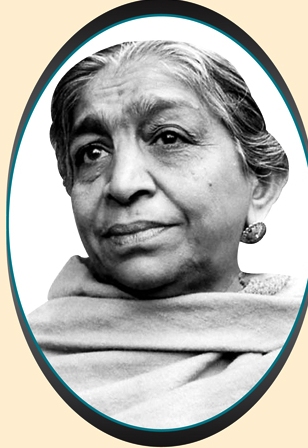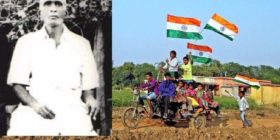Born as Sarojini Chattopadhyay, Naidu was a political writer, feminist, poet and writer. She is remembered today as one of India’s front running female freedom fighters.
On the occasion of her birth anniversary, here are some lesser known facts about her life and why she is one of the greatest Indian women in history.
1. She went to university at the age of 12
A brilliant student, she was chosen to attend the Madras University in 1891. From 1895 to 1898, she studied at King’s College in London and later on at Girton College in Cambridge. This was where she met the love of her life and husband Dr. Muthyala Govindarajulu Naidu.
2. A literary genius
Naidu had a talent for writing. At the age of 12 she wrote a Persian play that impressed the Nizam of Hyderabad. Her poetic work included over 25 poems, all of which combined the elements of nationalism, spirituality and the undying beauty of India.
In 1905, her first collection of poems, ‘The Golden Threshold’ was published. Her biography of Mohammed Ali Jinnah, ‘Ambassador of Hindu-Muslim Unity’ was also published.
3. The suffragist movement
While Naidu was a student in England, she was influenced by the suffragist movement which advocated women’s emancipation and the right to vote. This had a significant impact on her life as she joined the Congress movement in India, encouraging and inspiring more women to fight for their rights.
In 1917, she helped establish the Women’s India Association where she joined Annie Besant in presenting the case for the women’s vote to the Joint Select Committee.
4. The Indian National Congress
In 1925 she became the second female president of the Indian National Congress, following in the footsteps of Mahatma Gandhi’s Non-Cooperation Movement. During this time she took the opportunity to tour North America lecturing on the Indian Freedom Struggle. Her anti-British activities only got her imprisoned thrice but it did not stop her from pursuing her goals.
She accompanied Gandhi to London for the inconclusive second session of the Round Table Conference for Indian–British cooperation (1931). During World War II, she supported the Congress Party’s policies, first of aloofness, then lack of support to the Allies.
5. Governor of the United Provinces
In 1947, Sarojini Naidu became the first woman to become Governor of Oudh and the United Provinces (now Uttar Pradesh) and held the post till her death in 1949.
6. Legacy.
Aldous Huxley, a prominent English writer and philosopher wrote, “It has been our good fortune, while in Bombay, to meet Mrs. Sarojini Naidu, the newly elected President of the All-India Congress and a woman who combines in the most remarkable way great intellectual power with charm, sweetness with courageous energy, a wide culture with originality, and earnestness with humor. If all Indian politicians are like Mrs. Naidu, then the country is fortunate indeed.”
Naidu is remembered as a prominent figurehead of women’s rights in India and several colleges have been named after her.
In 1961, her daughter Padmaja published a collection of her last poems titled, ‘The Feather Of The Dawn’.
Palaquin Bearers
LIGHTLY, O lightly we bear her along,
She sways like a flower in the wind of our song;
She skims like a bird on the foam of a stream,
She floats like a laugh from the lips of a dream.
Gaily, O gaily we glide and we sing,
We bear her along like a pearl on a string.
Softly, O softly we bear her along,
She hangs like a star in the dew of our song;
She springs like a beam on the brow of the tide,
She falls like a tear from the eyes of a bride.
Lightly, O lightly we glide and we sing,
We bear her along like a pearl on a string
– Sarojini Naidu





Leave a reply